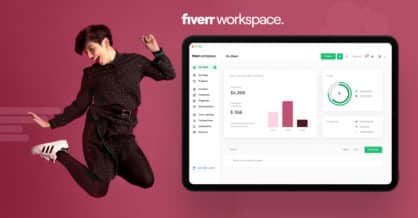Ethical theft. Is that an oxymoron? Isn’t theft, by its very nature, unethical? How could someone steal from another person ethically?
Well, it turns out that creative people do it all the time. It’s a natural part of the creative process.
This isn’t about copying (and it’s definitely not about plagiarism). It’s about taking inspiration from other people’s work, reinterpreting it and filtering it through your own experiences to create unique expressions. It’s about adaptation and evolution, rather than reproduction or duplication.
Mark Twain once said:
“There is no such thing as a new idea. It is impossible. We simply take a lot of old ideas and put them into a sort of mental kaleidoscope. We give them a turn and they make new and curious combinations.”
What Twain’s saying here is that artistic expression is a continuum that builds on itself. The work of newer artists leans heavily on the expressions of previous artists.
No one designs in a vacuum. When we’re creating, we build upon our experiences, including the work of designers that came before, as well as everything that we learn, see, do and interact with.
Often as creatives, we feel embarrassed or guilty for using something as our inspiration. But taking inspiration from what’s come before us is a natural part of the creative process – and a great compliment to the work we’re using as our muse.
Our original work is a mash-up of all the inputs we’ve accumulated throughout our lives, both actively and passively. Accepting this throws open the door for more efficient stealing and more effective design.
So the question you should ask yourself isn’t, “should I steal?” but instead, “how should I do it?”
Do your research
There are two types of inputs that we use when creating something new. You have the experiences that you’ve accumulated throughout your life, which become a passive filter to the subject matter. Then there are active inputs, those that you seek out specifically to provide grist for the mill of your creativity.
The former establishes the basis of your worldview, the lens through which you filter and process the world. They form your unique voice. The latter is the subject-specific material that you can process and filter through your unique perspective. Both are important but it’s only the latter that you have control over in the moment. So do your research.
When you’re preparing to start any creative endeavor it pays to know what’s already known. Read about design theory and principles or about the audience you’re designing for. Discover what other people have done on similar projects. Then allow that material to simmer around in your creative juices, peppering it with your own experiences and filtering the whole stew through your unique perspective. This result will be a new, individual take on the subject matter.
Build on what’s come before
Staring at a blank canvas can be daunting. Finding a starting point can be challenging when you’re faced with a sea of white. Sometimes the smartest, most efficient way to work is to start, not with a blank canvas, but with a blank template.
Templates are like generic starting points. They offer a focused beginning that takes care of some of the more monotonous parts of your expression, allowing you more time to build your unique vision. They offer direction when you’re feeling directionless. They let you “steal” a bit of someone else’s work to use as a jumping off point for your own. Like research, templates don’t expect that you’ll copy what they offer. Instead, you’ll take that focused beginning and mold it into something unique.
A great place to find your creative starting point is Design DB. It curates tons of free templates and design libraries to help stoke your creative juices. Whether you’re a web designer, UI designer or a graphic designer, you’ll find great sources of inspiration and practical design components you can use to get you started on almost any project. And if you have freebies of your own to share, you can submit them to be added to the database.
The internet is your friend
We’re lucky to live in a world where artistic expressions of all stripes are at our fingertips, available at a moment’s notice. Imagine what it was like for creatives prior to the Internet… You’d have to leave your house and drive to a library! You’d have to pour through stacks of books hoping that you’d find useful material to feed your creative fires.
These days if you’re ever stuck staring at a blank canvas, unsure how to proceed, just pull up your browser and start searching. Pull up an image search and start down the rabbit hole of related visual material. Search articles or blogs about related projects. There is no shortage of creative material available, waiting for your mental machinery to grind it into something new.
Roaming where the links may take you on the internet is a great way of filling your mind with quality starting material, material that your creative process can whittle away at.
Collect selectively
You can also look beyond design for inspiration. Collect solutions from other disciplines and think about how they can be applied to a design problem. Just as a writer might find a visual artist with a perspective that sheds light on something she’s trying to write about, a visual artist may hear a song that blows open a door in his mind and allows a new way of thinking about the project he’s working on. Expression is expression, regardless of the medium.
The more evocative, challenging material you can throw at your next design problem the more likely it is that the resulting output will be an interesting, unique expression that approaches the subject in a new way. And ultimately that’s what creativity is about.

